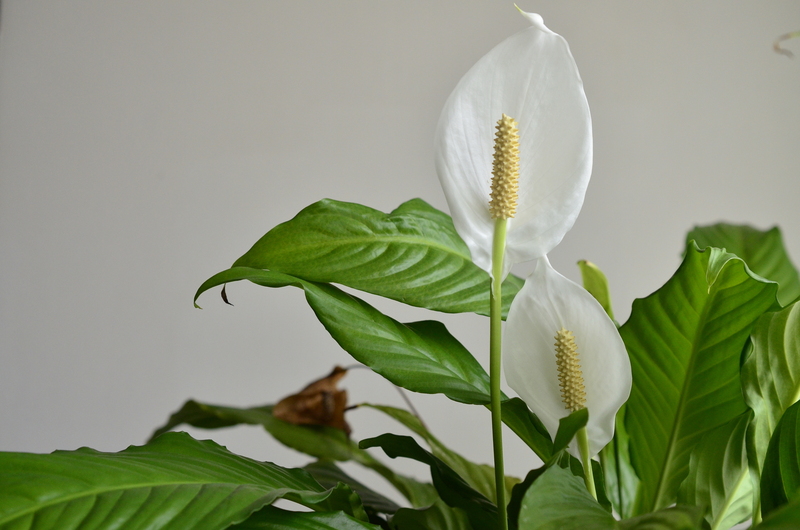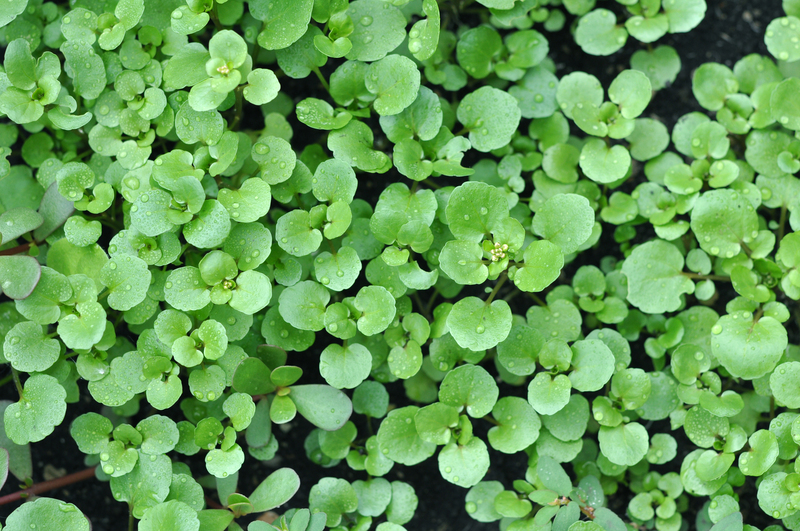Mastering the Craft of Container Gardening
Posted on 22/08/2025
Mastering the Craft of Container Gardening: A Comprehensive Guide
Container gardening is an art and science that merges creativity with horticultural know-how, allowing you to cultivate lush, beautiful plants in small spaces. Whether you're new to the world of container gardening or seeking advanced tips to elevate your skills, this guide covers everything from design inspiration to in-depth plant care.
What Is Container Gardening?
Container gardening refers to the practice of growing plants entirely within containers instead of directly in the ground. This versatile technique enables urban dwellers, renters, and property owners alike to bring greenery to balconies, patios, rooftops, and even interior spaces. From a single pot to elaborate arrangements, container gardening offers endless creative and practical possibilities.

Why Choose Container Gardening?
- Space Efficiency: Perfect for apartments, balconies, and small yards.
- Mobility: Easily move containers for aesthetic preference, optimal sunlight, or weather protection.
- Custom Control: Tailor soil, water, and fertilizer for each specific plant's needs.
- Pest and Disease Management: Greater isolation reduces large-scale infestations and makes plants easier to monitor.
- Creativity and Design: Experiment with shapes, colors, and plant combinations to create eye-catching displays.
The Essentials of Container Gardening
To master the craft of container gardening, start with these foundational elements:
1. Choosing the Right Container
Not all containers are created equal. Selection impacts not only the visual aesthetics but also plant health. Consider:
- Material: Options include terracotta, ceramic, plastic, metal, wood, and fabric. Each comes with distinct weight, insulation, and durability properties.
- Size: Ensure adequate room for root growth--larger containers allow for more soil, better moisture retention, and reduced watering frequency.
- Drainage: Containers must have drainage holes to prevent waterlogging and root rot.
- Shape and Depth: Match container dimensions to plant types--deep pots for root crops, shallower ones for herbs and flowers.
2. Selecting the Perfect Soil Mixture
Garden soil is too heavy and may harbor pests. For successful container gardening:
- Use a high-quality potting mix specifically formulated for containers.
- Incorporate perlite, vermiculite, or coconut coir for improved drainage and aeration.
- Add organic compost to boost fertility and encourage robust growth.
- For specialty plants (succulents, orchids, acid-loving species), choose tailor-made mixes.
3. The Art of Plant Selection & Arrangement
One of the joys of container gardening is the limitless pairing of colors, textures, and heights. For a stunning display:
- Thrillers: Tall focal plants (like cannas, ornamental grasses, or coleus) provide vertical drama.
- Fillers: Mid-level bushy plants (such as begonias or petunias) add fullness and cohesion.
- Spillers: Cascading vines (like ivy, sweet potato vine, or lobelia) soften container edges and create lush overflow.
Pro Tip: *Group plants with similar light, water, and nutrient needs for optimal results.*
4. Understanding Light Requirements
The key to healthy container plants is matching species with their ideal light exposure:
- Full Sun: At least 6 hours of direct sunlight. Best for vegetables, herbs, and many annuals.
- Partial Shade: 3-6 hours of morning or dappled sun. Great for impatiens, ferns, and shade-loving edibles.
- Full Shade: Less than 3 hours direct sun--think hostas, caladiums, or certain ferns.
Observe the sunlight patterns of your space before setting up containers.
5. Watering Wisdom
Consistent watering is critical in container gardening:
- Check soil moisture daily, especially during hot spells.
- Water thoroughly so that liquid drains from the bottom--shallow sips encourage weak roots.
- For larger setups, consider self-watering containers, drip irrigation, or watering globes to maintain even moisture.
- Bear in mind that porous containers like terracotta dry out faster than glazed ceramic or plastic.
Tip: Mulch the soil surface to retain moisture and suppress weeds in your containers.
Designing with Containers: Unleashing Creativity
Color Theory & Visual Impact
One of the secrets to successful container gardening is thoughtful design:
- Monochromatic Schemes: Use different shades of the same color for a sophisticated look.
- Complementary Contrasts: Pair contrasting colors (purple with yellow, red with green) for vivid, eye-catching displays.
- Texture Mixing: Combine smooth and rough foliage for added interest.
- Vary Heights: Play with plant stature within a single pot for instant drama.
The container itself should also complement the plant selection and surrounding decor--don't be afraid to make a statement!
Vertical Gardening with Containers
- Use hanging baskets, wall-mounted planters, and tall stacked pots for visual layering.
- Support climbing plants (like nasturtium, peas, or morning glory) with trellises or obelisks inside containers.
- Tip: Vertical container gardening is perfect for herbs, lettuce, and strawberries.
Types of Container Gardens
- Edible Container Gardens: Grow tomatoes, peppers, salad greens, blueberries, and assorted herbs on your patio or balcony.
- Ornamental Flower Containers: Create vibrant seasonal displays using annuals, perennials, and bulbs.
- Indoor Containers: Houseplants breathe life into interiors and improve air quality.
- Specialty Container Gardens: Try succulent arrangements, cactus pots, or even miniature fairy gardens for unique home accents.
Seasonal Container Gardening Tips & Maintenance
Spring & Summer
- Refresh potting mix and trim back overwintered perennials.
- Feed with balanced fertilizer to fuel active growth.
- Monitor for pests like aphids and spider mites.
Autumn
- Plant autumn-flowering bulbs or ornamental cabbages for color.
- Reduce watering as temperatures drop; stop fertilizing in late fall.
- Move tender plants indoors or into sheltered areas before frost.
Winter
- Insulate containers with bubble wrap, straw, or hessian to protect roots in colder climates.
- Water sparingly but don't let soil dry out completely.
- Clean empty pots with diluted bleach before storing for next season.
Common Mistakes and How to Avoid Them
- Overcrowding: Give plants enough space to grow and good airflow to prevent disease.
- Poor Drainage: Always use pots with drainage holes and avoid waterlogged setups.
- Using Garden Soil: Opt for well-draining potting mixes to avoid compaction and poor aeration.
- Neglecting Regular Feeding: Container plants exhaust soil nutrients quickly--feed as directed for healthy plants.
- Ignoring Sunlight Needs: Misplacing sun-loving or shade-preferring plants leads to weak or scorched specimens.
How to Troubleshoot Plant Problems
- Yellowing Leaves: Check for overwatering, nutritional deficiencies, or lack of sunlight.
- Limp or Wilting Plants: Assess watering schedule and root condition; adjust accordingly.
- Pale Foliage: Feed with a balanced fertilizer and ensure good light exposure.
- Pests & Diseases: Use organic controls such as neem oil or insecticidal soap, and remove affected leaves when possible.
The Best Plants for Thriving Container Gardens
What you can grow depends on your space and light:
- Herbs: Basil, parsley, mint, thyme, oregano, chives
- Vegetables: Cherry tomatoes, bush beans, salad greens, peppers, radishes
- Flowers: Geraniums, marigolds, begonias, petunias, impatiens
- Foliage: Coleus, caladium, ornamental grasses, ferns
- Succulents: Echeveria, jade, snake plant, aloe vera
Advanced Container Gardening Techniques
Organic and Sustainable Practices
- Use organic potting soils, compost, and natural fertilizers.
- Mulch plant surfaces with leaf litter or coir to reduce evaporative loss.
- Collect rainwater for watering to conserve resources.
Hydroponic & Self-Watering Containers
Hydroponic and wick-style containers simplify care for busy gardeners or tech enthusiasts, offering automated nutrients and watering. Self-watering planters are especially useful for herbs or small vegetables.
Smart Tech Integration
- Use moisture, light, and temperature meters to fine-tune your routine.
- Automated irrigation systems can be connected to smart home apps for real-time status updates.

Container Garden Care: Year-Round Mastery
- Rotate containers regularly for even growth and light exposure.
- Change out annuals seasonally for fresh color schemes.
- Regularly clean containers inside and out to prevent disease buildup.
Remember, the success of container gardening comes from attention to detail and a willingness to experiment.
Conclusion: Becoming a Container Gardening Expert
Mastering the craft of container gardening unlocks an array of possibilities--no matter your available space or experience level. By thoughtfully selecting containers, choosing the right soil, carefully arranging compatible plant species, and staying attentive to their changing needs, anyone can create thriving, beautiful gardens in any setting. Start small if you must, but keep experimenting, learning, and growing--container by container!
Ready to take your container gardening skills to the next level? Explore new plants, challenge yourself with creative arrangements, and enjoy the therapeutic rewards of nurturing your very own garden oasis. The journey toward container gardening mastery is as fulfilling as the lush results you'll achieve.

